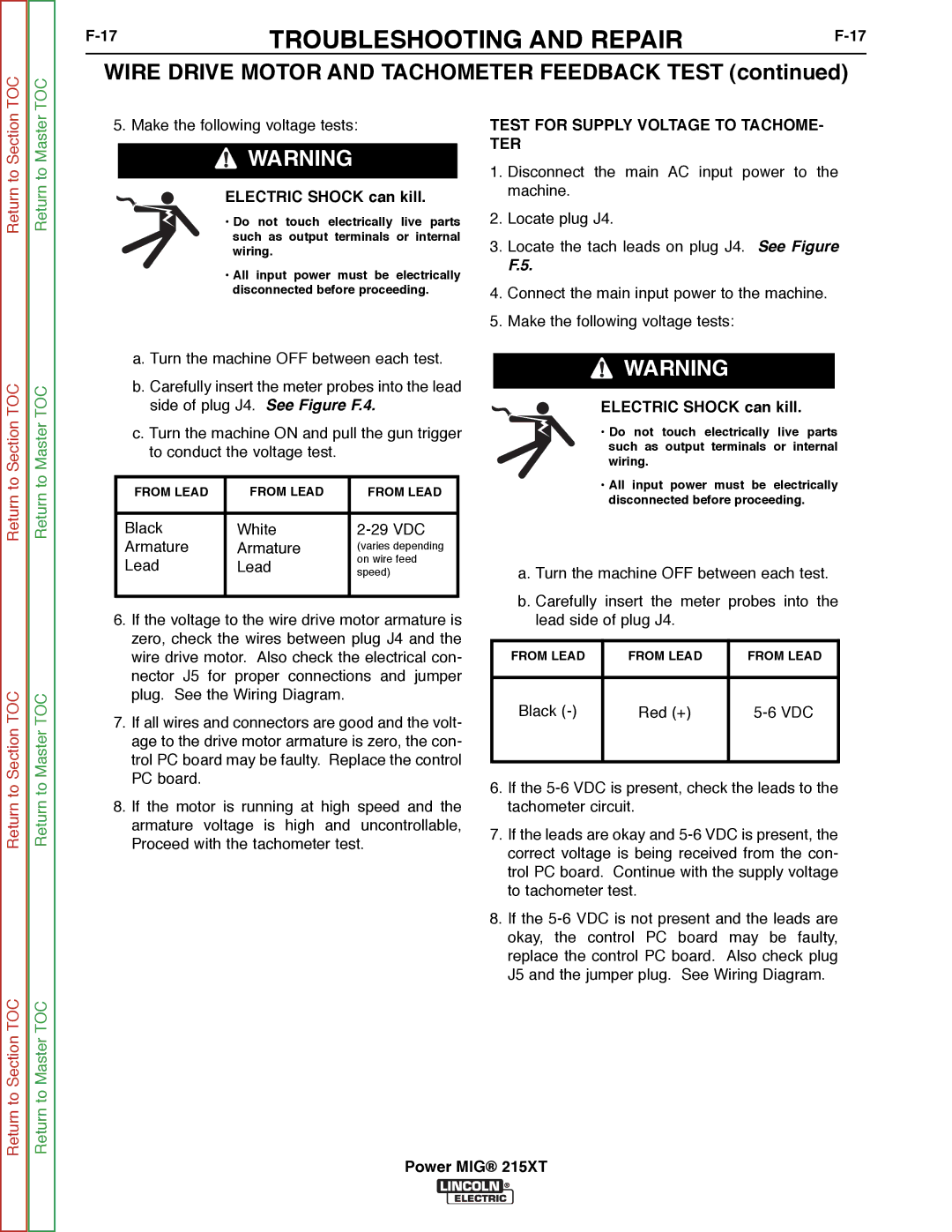11521 specifications
The Lincoln Electric 11521 is a highly regarded choice among welders and metal fabricators, known for its reliability and efficiency. This portable MIG welder excels in delivering professional-grade results, making it suitable for both beginners and experienced welders. One of the standout features of the Lincoln Electric 11521 is its user-friendly design, which facilitates ease of use and enhances the overall welding experience.Equipped with a powerful 180 amp output, the Lincoln Electric 11521 is capable of tackling a wide range of welding applications. It operates on a standard 230-volt outlet, allowing users to work on various materials, including mild steel, stainless steel, and aluminum, with thicknesses up to 5/16 inch. This versatility is crucial for those who handle different types of projects, from automotive repairs to home improvement tasks.
The welder employs a spool gun for welding aluminum, ensuring a smooth and efficient feeding of the wire. This technology mitigates the problems commonly associated with feeding aluminum wire through a regular gun, providing a seamless experience. Additionally, the Lincoln Electric 11521 features an adjustable welding speed and voltage, enabling users to fine-tune their settings to match the specific requirements of each project. This adaptability leads to better penetration, bead shape, and overall weld quality.
Another important aspect of the Lincoln Electric 11521 is its durability. Constructed with high-quality materials, this welder is designed for tough jobs and can withstand the wear and tear associated with heavy use. The unit's compact size and lightweight design further enhance its practicality, making it easy to transport between job sites or store when not in use.
Safety is a crucial element in welding, and the Lincoln Electric 11521 does not compromise on this aspect. It features a thermal overload protection system, which prevents damage to the machine by shutting it down in case of overheating. The welder also includes a gas-saving mode that intelligently reduces the gas flow during idle times, maximizing efficiency.
In summary, the Lincoln Electric 11521 is a versatile and reliable MIG welder that caters to a wide range of welding needs. With its powerful output, user-friendly features, advanced technologies, and robust safety mechanisms, it is an excellent investment for professionals and hobbyists alike looking to achieve high-quality welds with ease.

